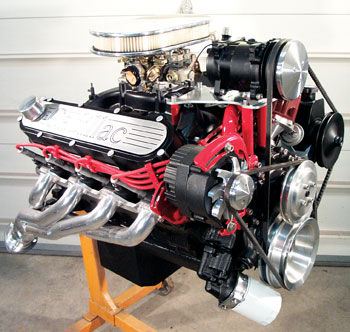 Q: At what point should an engine be replaced?
Q: At what point should an engine be replaced?
A: When it is more economical to replace it than repair it. Today’s engines are built to last 150,000 miles or more. Most engines can go the distance with proper maintenance. Without regular oil and filter changes, the engine will suffer oil sludging, loss of lubrication and internal damage long before it reaches the end of its intended service life.
Several forces are at work to shorten engine life. One is leasing. People (and fleets) who lease new cars and trucks tend to skimp on maintenance because they know they’re not keeping the vehicle more than 12, 24 or 36 months. Consequently, the second owner often suffers the consequences of the first owner’s neglect.
Extended oil change intervals of 7,500 miles or longer that are recommended by some vehicle manufacturers to reduce maintenance costs are also causing many late-model engines to fail prematurely. Changing the oil and filter every 3,000 miles or three to six months is still the best advice for most motorists.
Even with proper maintenance, all engines eventually wear out. Rings, bearings and cylinders wear. Timing chains, gears and oil pumps wear. Timing belts can break. Camshafts, lifters and valve guides wear. Valve springs lose tension. Gaskets and seals can start to leak.
If an engine loses its supply of coolant because of a leaky water pump, radiator or hose failure, or the thermostat sticks shut, the engine may overheat and crush a head gasket, scuff a piston or crack a cylinder head.
Today, any damage that requires internal engine repairs can often cost as much in parts and labor as replacing the entire motor with a remanufactured engine.
Replacing the original engine can provide years of additional use from an existing vehicle, and can save the owner the expense of having to purchase a replacement vehicle and make higher monthly payments. People are keeping their vehicles longer than ever before today, and many are “upside down” as to what they owe on their vehicles and what it is worth to sell or trade — especially if it has a bad engine.
It is probably time to replace an engine if (1) it is using more than a quart of oil every 1,000 miles, (2) it is misfiring because of oil-fouled spark plugs or loss of compression in one or more cylinders, or (3) it has unusually low oil pressure and/or is making knocking or rattling noises that indicate bearing wear. If an engine has seized, it has reached the end of the road and must be replaced.
Q: What’s a “crate” engine?
A: A crate engine is a new or remanufactured engine that comes in a crate, assembled and ready to install. You can get stock crate replacement engines or upgrade to a performance crate engine and choose almost any horsepower level from mild to wild. A typical crate engine comes with the heads and intake manifold mounted on the block. Some may even include a new carburetor or injectors.
Crate engines have become a popular alternative to overhauling or custom rebuilding engines because of the cost savings and convenience they offer. There’s no waiting for back-ordered parts to arrive or machine work to be finished, there are no unpleasant surprises and the engine is ready to go. Most crate engines are backed by a warranty and have been pre-tested to assure quality and performance.
One of the reasons why crate engines are selling so well today is because machine shop labor has become so expensive. Every job that requires machine work and handling adds cost to overhauling or repairing an engine.
Overhauling an engine involves tearing the old engine apart, cleaning everything, inspecting the block, heads and parts for cracks, wear and damage, replacing anything that is worn and can’t be reused, remachining the block, heads and crankshaft, and finally reassembling the engine. It’s much more economical for engine builders to do this kind of work on a production line than to do individual jobs on a piecemeal basis.
There are a lot of unknowns when overhauling an existing engine. The block, heads or crank may be too badly worn or damaged to be reused, or these parts may require a lot of expensive reconditioning (such as sleeving the block or boring the cylinders to oversize and replacing the original pistons with oversized pistons). Aluminum overhead cam heads are often cracked or warped, and require welding and straightening — if they can be salvaged at all. With a crate engine, there are no such surprises and the cost is fixed.
Crate engines also are a good way to provide a performance upgrade to a customer. Although performance-based domestic crate engines have been around for a while, much of the growth today is being seen with import engines. There’s several companies out there that now offer preassembled Honda and Mitsubishi crate engines that are built to give your customer 270 to 300 hp right out of the box. Crate engines like these typically retail for $10,000 to $12,000 and come with a 12-month, 12,000-mile warranty.
Most crate engines are sold outright, so there are no exchange hassles (plus the old engine can be sold to someone else if it’s still good). And there’s no risk of misassembly because the engine comes assembled, pre-tested and ready-to-install. All you have to do install the intake plumbing, ignition system and exhaust, and do the final tuning.
Q: What are the most common installation mistakes when replacing an engine?
A: Not priming the oil system before cranking the engine, or forgetting to fill the crankcase with oil. A dry start will ruin any engine in a hurry.
Other common mistakes include not getting the cooling system properly filled (air pockets lead to overheating), misrouted vacuum hoses and wiring, leaving ground straps off — and not diagnosing and correcting pre-existing conditions that may have caused the original engine to fail.
